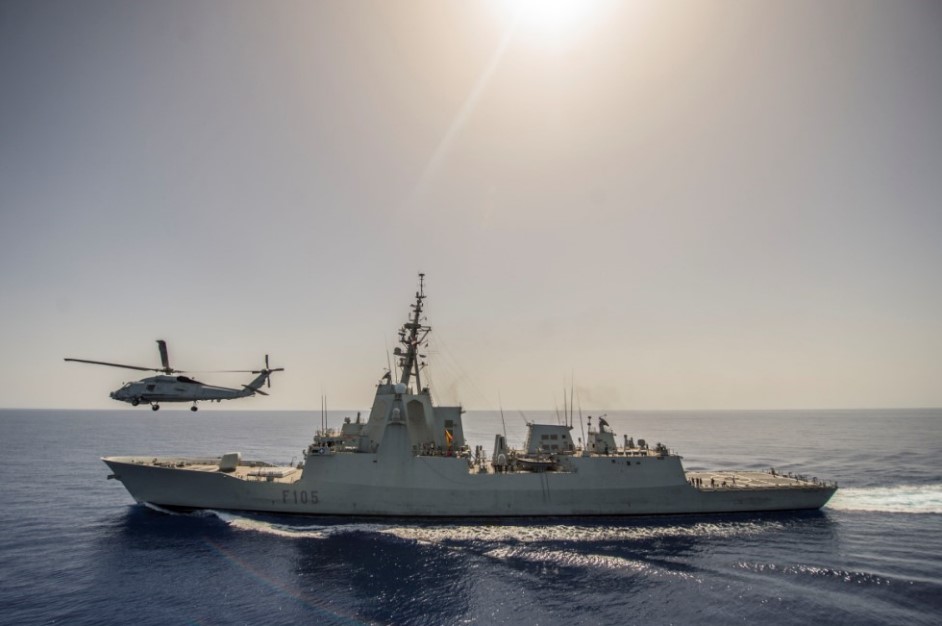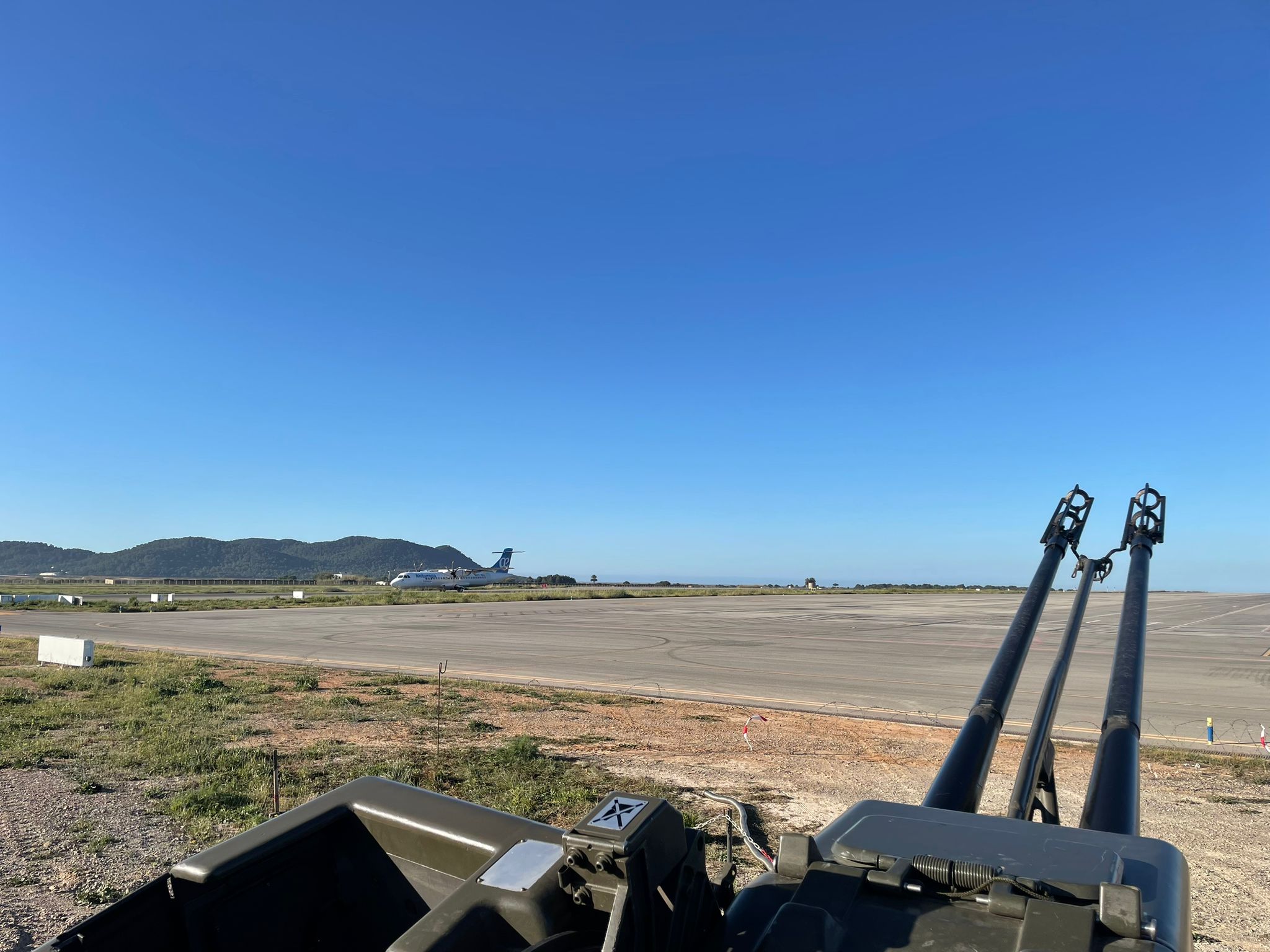
Operational Aerospace Command activates 'Eagle Eye 23-01' In Balearic Islands
- This is an operational activity that integrates the Spanish Air Defence System to provide security in the area surrounding the Balearic Archipelago
The Operational Aerospace Command (MOA in Spanish), under operational control of the Operations Command, has activated its forces in the 'Eagle Eye 23-01', from 20 to 24 March 2023, in the Balearic Islands. This operational activity is one of the major activations carried out by the Spanish Armed Forces on national territory.
More than 2,000 military personnel -from the Army, the Navy and the Air and Space Army integrated in the Operational Aerospace Command - are involved in 'Eagle Eye 23-01', whose objective is to provide to the operational structure of the Armed Forces with the capabilities of the Aerospace Operational Command, trained and able to carry out the permanent tasks of surveillance and air defence of the national territory, 24 hours a day, every day of the year.
The 'Eagle Eye 23-01' activation is of great relevance in order to highlight how the Joint Force Command - the units assigned to exercise presence, surveillance and deterrence within the framework established for the permanent mission of defending Spain - works in national territory. On this occasion, it is an activation of presence, surveillance and deterrence of our national airspace that is why the Aerospace Operational Command is in charge of it.
In the face of the current global situation, the Spanish Armed Forces remain well prepared and ready to confront any contingency. This activation by the Aerospace Operational Command demonstrates the high degree of availability and readiness of the Spanish Armed Forces to respond to any threat in the airspace under national sovereignty.
The Aerospace Operational Command permanently exercises the mission of presence, surveillance and deterrence in our airspace. Through the Air Defence System, which integrates its forces into the command and control system and activates them at different points in Spain whenever the circumstances require it.
Eagle Eye 23-01 Activation
On the part of the Air and Space Army, 6 F-18s from the 12th Wing (Torrejón Air Base, Madrid), the C-UAS CROW system of the Air Deployment Support Squadron (EADA) and the Central Command and Control Group (GRUCEMAC) of the Aerospace Surveillance and Control System Headquarters together with the Air Operations Centre have been deployed. The Army provides an Air Defense Unit and the Navy patrols the Mediterranean Sea around the Balearic Islands with its frigate F-105 'Cristóbal Colón'.
The F-18s and the aviators of the 12th Wing dedicate their main effort to keep the fighter planes on permanent alert to carry out surveillance and air defence missions against unidentified aircrafts attempting to breach our airspace. These aircraft perform the various missions from the Son San Juan Air Base and have been integrated into the NFC-1 command and control system, established by the Aerospace Operational Command to conduct the activation.
As an innovation, the Air Deployment Support Squadron has deployed the C-UAS CROW system for the defence of the Airport, Son San Juan Air Base and the city of Palma de Mallorca. It consists of a fixed deployable system that allows the detection, identification and neutralization of drones through the integration of different sensors and effectors (radar, radiofrequency detectors, inhibitor and electro-optical and infrared cameras). It should also be noted that this Support Squadron will face threats from reduced size drones, flying at low altitude and at low speed.
The mission of the Central Command and Control Group, located at Torrejon Air Base (Madrid), is the surveillance, detection, identification and classification of air objects within the airspace of national sovereignty and responsibility, as well as the tactical control of air surveillance missions and, where appropriate, air defence, assigned to it. This mission is carried out continuously 24 hours a day, 7 days a week. It should be noted that our Command and Control centres are provided with the traces identified thanks to the 13 radars distributed throughout the Spanish territory, and, in this case, the closest to this activation is the Air Surveillance Squadron No. 7, located in Soller (Mallorca).
The integrated unit of the Army in this activation is the "Jaime I" Air Defence Unit. This unit will be led by the II/71 Antiaircraft Artillery Group. It will be integrated by different units depending on the Antiaircraft Artillery Command and the "Aragón I" Brigade. Its function is going to be to complement the capabilities of the Aerospace Operational Command. This group has a proven experience in operations, such as those in Turkey and Latvia or supporting permanent operations in national territory. Different systems such as MISTRAL from the 71st Antiaircraft Artillery Regiment (Madrid), 35/90 Skyguard and NASAMS from the 73rd Antiaircraft Artillery Regiment (Cartagena) and HAWK from the 74th Antiaircraft Artillery Regiment (Seville) will join forces to achieve the success of the operation. In addition, the Transmissions Unit of the Air Artillery Command will ensure the liaison and integration of the Air Defense Unit in the Command and Control System, while a company of the Infantry Regiment "Palma 47" will carry out the security tasks in the deployment.
During this activation, air surveillance and defensive missions will be carried out in response to simulated air incursions and manoeuvres by unidentified aircraft. The objective is to contribute to the permanent operation of surveillance and defence of national airspace, as well as to combine synergies, improve the integration and interoperability of these resources and maximise their operational performance. The Air Defence Unit will be distributed in various locations on the island of Ibiza.
The Navy, with its frigate 'Cristóbal Colón', will contribute to the surveillance and defence operations of the national airspace thanks to its AEGIS combat system and the SPY-1D (V) multifunction radar, in addition to other sensors and weapons. The ship is equipped with an information and weapons management system, enabling it to respond to threats from the air, from other ships or from submarines.
During this activation, a series of flights of external means are planned. They will force the execution of defensive air missions, providing additional training and the possibility of evaluating the integration of land, naval and air assets in the command and control system and in the Spanish Air Defence System, under highly complex situations.
Fotos




